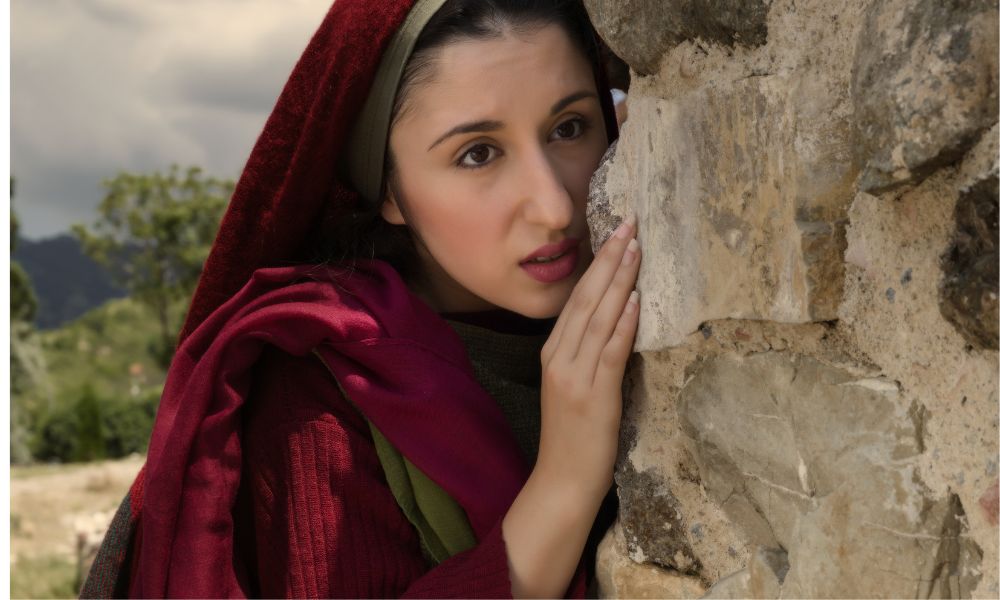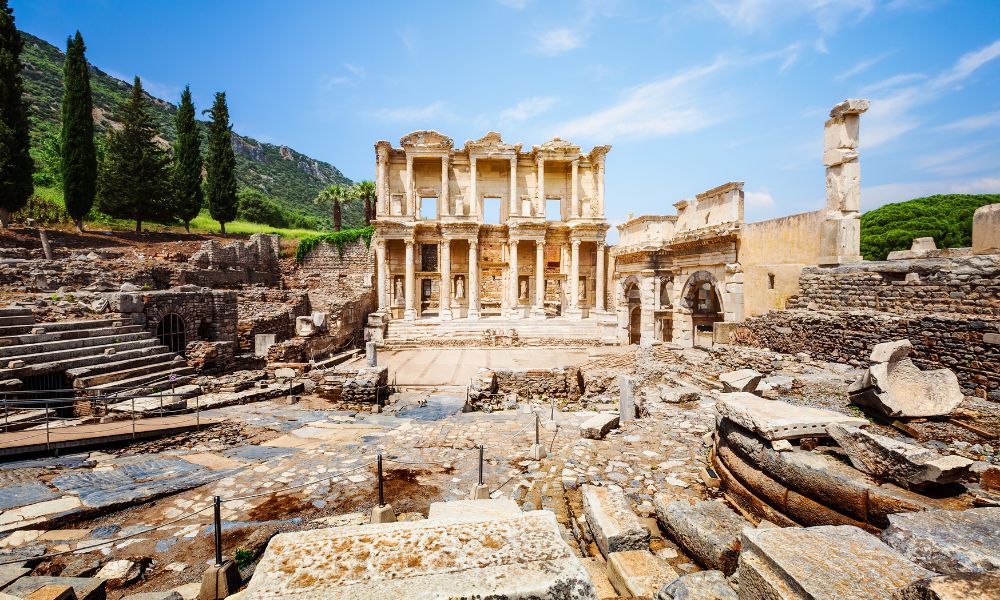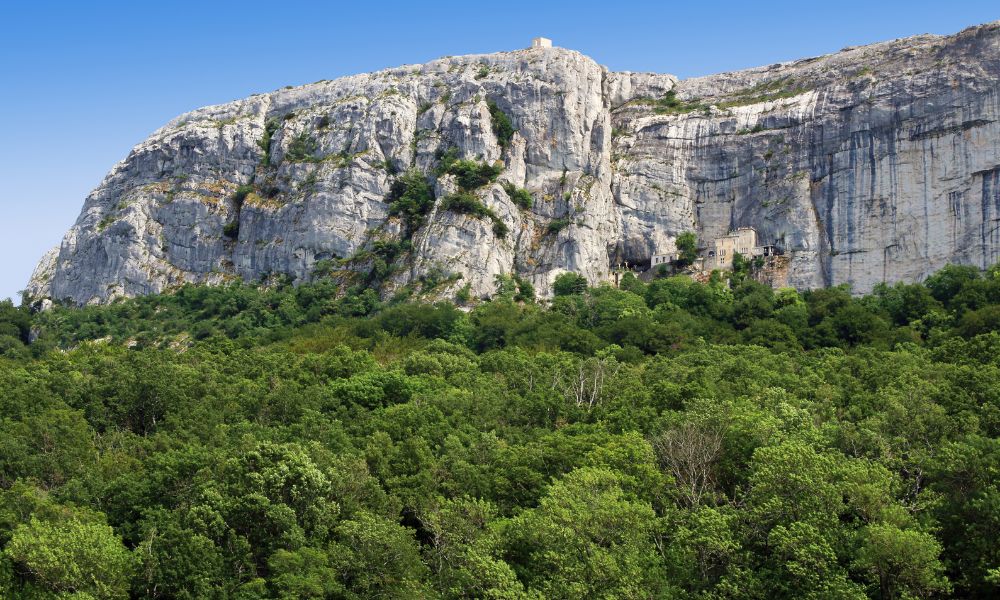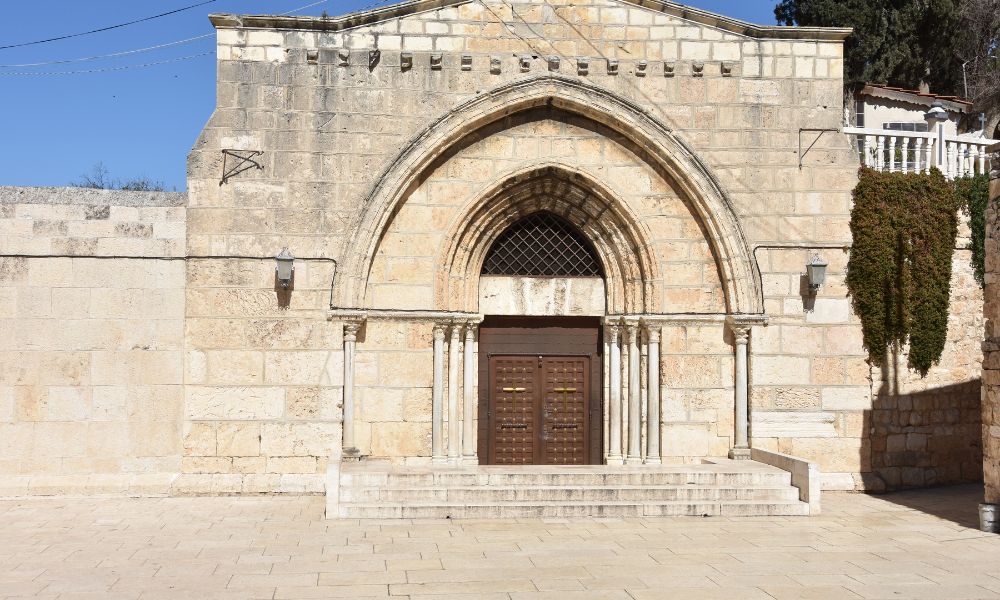Mary Magdalene, one of the most enigmatic and debated figures in Christian tradition, has captured the imagination of theologians, historians, and believers throughout the centuries. Often misunderstood, the true story offers a rich narrative of redemption, spiritual leadership, and a deep connection with Jesus Christ.
This guide invites readers to rediscover Mary Magdalene, not only as a follower of Jesus, but as an apostle whose influence and legacy continue to resonate today.
Moreover, you will discover the sacred places believed to have witnessed her devotion and ministry, offering a unique view of her role in the early days of Christianity. Join us on this journey to understand how this important figure in Christianity remains a source of inspiration and veneration in the Christian faith.

Mary Magdalene emerges in the Gospels as a central and moving figure, whose presence and role in the life of Jesus Christ have been the subject of deep veneration and, at times, controversy.
In the texts of the New Testament, she is mentioned more times than most of the apostles and always near crucial moments in the Christian narrative. Especially highlighted in the resurrection accounts, Mary Magdalene was the first person to see the resurrected Jesus. Undoubtedly, an honor that solidifies her importance as a close disciple and key witness to this foundational event.
Over the centuries, interpretations of her role have varied significantly. Initially venerated as the “apostle to the apostles.” However, her image was transformed, often obscured by interpretations that confused her with other biblical figures or wrongly portrayed her as a penitent.
However, recent revisions in biblical studies and archaeological findings have contributed to a reevaluation of her figure. These highlight her essential role in the early years of Christianity and in the pilgrimages to sites associated with her life and ministry.
This rediscovery has spurred renewed interest in her connection with the Virgin Mary, another central figure in Christianity, in terms of devotion and impact on the faithful.
The story of Mary Magdalene invites us to explore the depths of faith and the power of redemption. It shows how her legacy continues to inspire generations of pilgrims and devotees on their spiritual journey.
Recognized as a saint by many denominations, her figure has been venerated for her closeness to Jesus and her role as the first witness of the Resurrection. This devotion is manifested in numerous churches and pilgrimage sites dedicated to her memory, such as Garabandal or Santo Toribio de Liébana, significant places in Christianity.
Historical controversies surrounding Mary Magdalene (especially the interpretations that confused her with other women in the New Testament or wrongly labeled her as a repentant prostitute) have been the subject of intense scrutiny in recent decades.
This rediscovery has led to the debunking of many myths and her rehabilitation as a key figure in the origins of Christianity. This process has helped purify her image and highlight her true importance as a disciple and spiritual leader.
In terms of symbolism and meaning, she represents several fundamental aspects of the Christian faith. Her story is one of redemption and service, showing how proximity to the divine transforms and elevates individuals. Her figure also embodies resilience and the ability to be a witness to the truth, even in circumstances of profound challenge and change.
The Christian figure is intrinsically linked to various places that have profoundly marked the Christian tradition and continue to be pilgrimage destinations for many believers. These sites, scattered across geographies and cultures, reflect her spiritual legacy as well as the historical and archaeological richness surrounding her memory.
Among these prominent places, we find everything from her birthplace to remote corners of Europe, each contributing a unique piece to the mosaic of her life and work.

Magdala, located near the Sea of Galilee in Israel, is primarily recognized as the birthplace of Mary Magdalene.
This place has gained great archaeological importance after recent discoveries, including a 1st-century synagogue, where Jesus himself may have taught. Excavations have uncovered ancient structures that provide a window into life during the New Testament period, offering a tangible context for Mary Magdalene’s life.
Besides its historical significance, Magdala serves as a powerful symbol of renewal and discovery. It reflects the contemporary rediscovery of Mary Magdalene as a central figure in the early years of Christianity.
Magdala invites pilgrims to explore not only the physical ruins but also the spiritual impact of one of Jesus’ most prominent followers, strengthening their personal connection to this figure.

In the ancient city of Ephesus, located in modern-day Turkey, there are traditions linking Mary Magdalene to this historic place. Ephesus is well known for its monumental temple dedicated to Artemis, one of the largest of the ancient world, and for its significant Christian community in the early centuries.
Direct evidence of Mary Magdalene’s presence in Ephesus is scarce. However, legends and oral tradition suggest that she may have traveled to this city as part of her mission to spread the gospel.

In Provence, France, lies La Sainte-Baume, a place of deep veneration and mysticism associated with Mary Magdalene.
According to tradition, after the Resurrection, she traveled to this region and spent the last years of her life in a cave, dedicating herself to a life of prayer and contemplation. The cave, now a sanctuary, remains a focal point of pilgrimage, where the faithful can experience serenity and spiritual retreat.
The sanctuary of La Sainte-Baume is a testament to Mary Magdalene’s legacy and a reflection of her transformation from disciple to hermit, a spiritual journey that continues to inspire many. The complexity of her figure is encapsulated in this tranquil landscape, full of natural beauty and contemplative silence, evoking a deep connection with the divine.
Around the world, numerous chapels and churches bear her name, each with its own story connecting the local community to her spiritual legacy. From rural chapels to grand urban cathedrals, these places of worship reflect the universality of her figure and the wide acceptance of her sanctity in various cultures and Christian traditions.
Other pilgrimage sites related to the figure of Mary Magdalene include:
Archaeological discoveries have played a vital role in deepening our understanding of these historical and biblical figures. These findings complement religious narratives with tangible evidence, allowing us to reconstruct contexts and historical relationships with greater accuracy.
Next, we explore some of the most significant discoveries related to Mary Magdalene and her surroundings.
Excavations in Magdala have uncovered a wealth of infrastructure that sheds light on what life was like during the time of Jesus.
Notably, archaeologists discovered a 1st-century synagogue, one of the few known from this period in Galilee. This finding is significant because it suggests that the site was a center of religious and community life. Undoubtedly, a plausible setting for Mary Magdalene to have interacted with the teachings of Jesus.
Furthermore, excavations have revealed residential and commercial complexes that show a prosperous and diverse community. Everyday objects, from kitchen utensils to coins, help researchers better understand daily practices and the economic environment of the time.

The search and study of Mary Magdalene’s tomb has been the subject of considerable debate and speculation. Over the years, various locations have been proposed as her final resting place, including sites in Provence, France, and Jerusalem. However, the lack of conclusive evidence has left these claims in the realm of academic conjecture and tradition.
The debates have intensified with new technologies, such as radiocarbon dating and DNA analysis, applied to bones and relics attributed to Mary Magdalene.
It has never been definitively confirmed that these remains are those of Mary Magdalene. However, ongoing research holds the potential to resolve some of these uncertainties, bringing clarity to her post-mortem history.
Archaeological discoveries have contributed to clarifying connections with other important biblical figures.
For example, findings in Magdala and Capernaum have provided details about how the communities where Jesus taught were structured and how they related to one another. This includes Mary Magdalene’s relationship with the apostles and her participation in the early Christian groups.
Moreover, the apocryphal texts found in Nag Hammadi, Egypt, such as the Gospel of Mary (although not recognized in the official biblical canon), offer perspectives on how different early Christian communities might have viewed and venerated Mary Magdalene. These texts suggest a higher view of her spiritual and theological role, illustrating her potential doctrinal and pastoral impact.
Compared to other female figures in the New Testament (such as Mary of Bethany and the Samaritan woman), Mary Magdalene stands out for her constant proximity to Jesus, especially during the key moments of his ministry.
While other women also showed faith and devotion, Mary Magdalene is unique in being a witness to both the crucifixion and the resurrection of Jesus, defining moments of Christianity. Unlike many women of her time, who are primarily mentioned in domestic contexts or in brief interactions, she is portrayed as a persistent and central figure.
The role of this woman in the formation of the early church is significant and complex. Beyond her mere presence in key events, she is attributed with an early leadership role. This is especially evident in the Gnostic gospels, where she is seen actively participating in theological and spiritual debates.
Her figure is emblematic of female participation in the early Christian communities, challenging the social and religious restrictions of the time to take on leadership and teaching roles.
For Christians today, Mary Magdalene represents several deeply resonant spiritual and human dimensions. Her story is one of redemption, dedication, and leadership, offering a model of discipleship that transcends gender and time.
In recent times, her figure has been revalued as a symbol of the struggle to recognize the role of women in religious history and in current ecclesiastical structures.
Mary Magdalene challenges modern believers to reflect on inclusion, mercy, and the true meaning of following Christ.
Ultimately, this Christian figure continues to inspire generations of believers. She serves as a bridge between the past and the present and reminds us of the capacity of faith to transform lives and societies. Her legacy lies not only in what she did, but in how her story has been interpreted and reinterpreted throughout the centuries, reflecting the concerns and hopes of each era.
Stay Connected with WayHoly
Discover your perfect pilgrimage and be the first to know about new journeys. By subscribing to our newsletter, you’ll receive the latest updates on pilgrimages, exclusive offers, and spiritual resources to enrich your faith journey.
Don’t miss the opportunity to deepen your connection with God and lead others on their path to spiritual renewal. Join us today and become an instrument of His Will through WayHoly!
“To upload your pilgrimage, please choose one of our plans and create an account, or log in if you’re already a member. Join us in guiding others on their spiritual journey.”